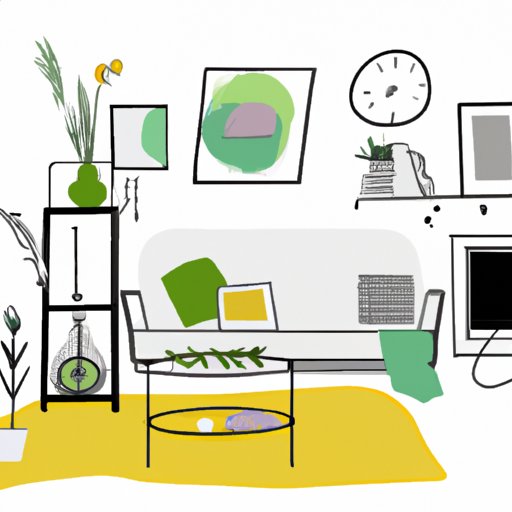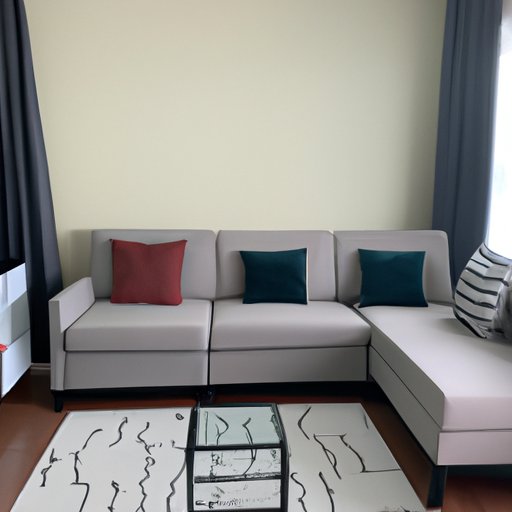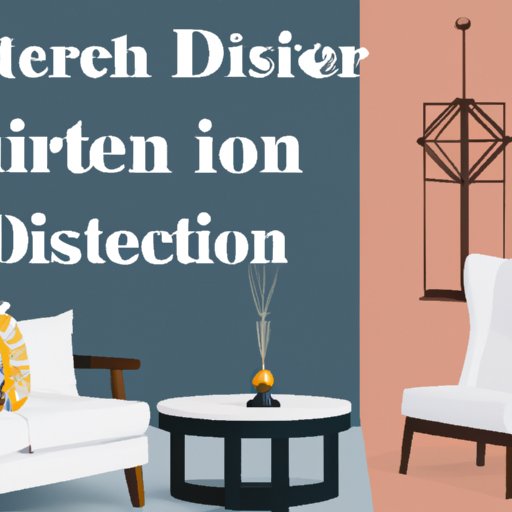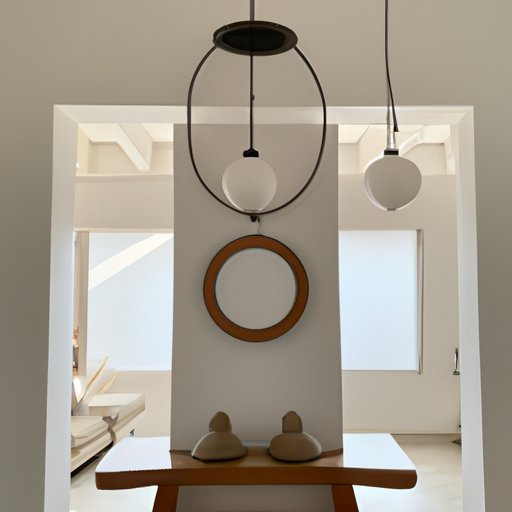Introduction
Proportion is an essential element of interior design. It refers to the relationship between elements in a space, such as the size, shape, and placement of furniture, accessories, and artwork. By utilizing proportion, interior designers are able to create a sense of balance, harmony, and visual appeal within a room. In this article, we will explore what proportion is, the benefits of using it in interior design, and how to use it to achieve maximum impact.
Exploring Proportion in Interior Design: A Guide to Creating Balance and Harmony
Understanding the principles of proportion is key to creating a harmonious interior design. Proportion is based on the ratio between two or more elements, and can be expressed in terms of size, shape, color, texture, and placement. By understanding these principles, designers can create a balanced and aesthetically pleasing space.
When applying proportion in interior design, there are several techniques that can be used. For example, designers may opt to use symmetry, which involves mirroring elements on either side of the room. Asymmetry, on the other hand, involves arranging elements at varying distances from each other. Additionally, designers may use line and form, scale and proportion, and basic geometric shapes to create visual balance.
To illustrate how proportion can be used in interior design, let’s look at some examples of successful designs. A well-proportioned living room might feature a sofa that is paired with two chairs, all arranged in a symmetrical pattern. The furniture pieces should be similar in size, color, and texture, and should be spaced evenly around the room. Another example would be a bedroom that features a large bed flanked by two nightstands of equal size and shape. The bedding should also be in proportion to the bed frame, creating a cohesive and harmonious look.

How to Use Proportions to Create a Harmonious Interior Design
Utilizing the elements of proportion is key to achieving balance in interior design. When designing a room, designers should consider the size, shape, and placement of each element. Furniture pieces should be arranged in a symmetrical or asymmetrical pattern, depending on the desired effect. Additionally, basic geometric shapes, such as squares, rectangles, and circles, can be used to create visual balance.
Incorporating proportion into your design can have a major impact on the overall look and feel of the space. Colors and textures should be chosen carefully to ensure that they complement one another. Additionally, furniture pieces should be sized appropriately for the room, taking into consideration the amount of available space. By utilizing the principles of proportion, designers can create a harmonious and visually appealing interior design.

How to Utilize Proportion in Interior Design for Maximum Impact
Analyzing room proportions is an important step when designing a space. Designers should take into account the dimensions of the room, as well as the height of the ceiling, when selecting furniture pieces. This will help to ensure that the furniture is scaled properly for the room, creating a balanced and harmonious look.
Color and texture can also be used to enhance proportion. For example, designers may choose to use colors that are complementary, such as shades of blue and green, to create a visually appealing palette. Textures should also be taken into consideration, as different materials can have a major impact on the look and feel of the space.
Finally, when creating a proportional design, it is important to find the right balance. Too much of one element can make a space appear cluttered and uninviting, while too little can make it seem sparse and empty. Designers should experiment with different arrangements until they find the perfect balance.
Using Proportion in Interior Design: Tips for Achieving Visual Balance
Setting the tone of a room is essential when creating a proportional design. To do this, designers should first establish a focal point, such as a fireplace or a statement piece of furniture. This will draw the eye and provide a starting point for the rest of the design.
Establishing contrasts is also important for creating visual appeal. For example, designers may opt to use light and dark colors, or hard and soft textures, to create interest and movement. Additionally, adding depth and dimension to the design through the use of artwork and accessories can help to create a balanced and harmonious look.

Unlocking the Secrets of Proportion in Interior Design: Finding the Right Balance
Symmetry and asymmetry are two key elements of proportion. Symmetrical designs typically feature elements that are arranged in pairs, while asymmetrical designs involve arranging elements at varying distances from each other. Experimenting with line and form can also help to create a balanced design. For example, curved lines can be used to soften a space, while straight lines can add structure and definition.
Scale and proportion are also important considerations when designing a space. Designers should pay attention to the size of furniture pieces and the way they interact with one another. For example, a large sofa placed next to a small chair may create an unbalanced look. Similarly, artwork and accessories should be chosen with scale in mind.
Conclusion
Proportion is an essential element of interior design. By understanding the principles of proportion and utilizing the elements of size, shape, color, texture, and placement, designers can create a balanced and harmonious space. Additionally, experimenting with line and form, scale and proportion, and basic geometric shapes can help to create visual appeal. Finally, finding the right balance between elements is key to achieving maximum impact in any design.
(Note: Is this article not meeting your expectations? Do you have knowledge or insights to share? Unlock new opportunities and expand your reach by joining our authors team. Click Registration to join us and share your expertise with our readers.)
